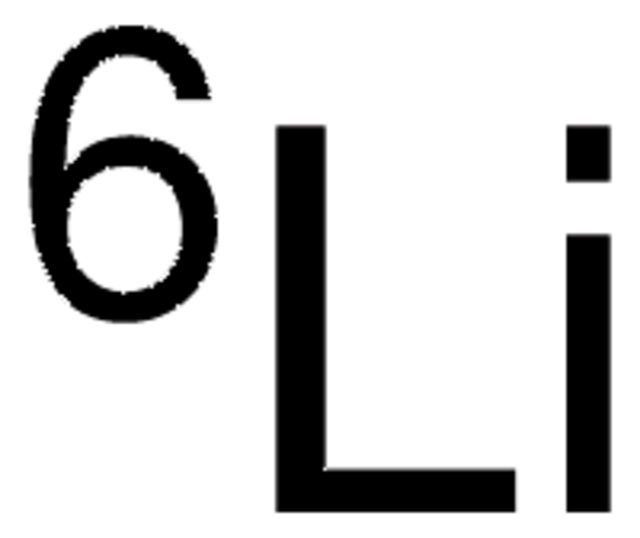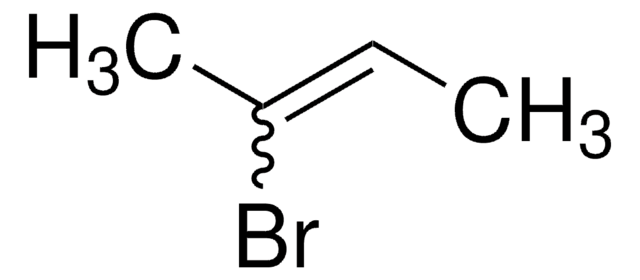278327
Lithium
wire, diam. 3.2 mm, in mineral oil, ≥98%
About This Item
Prodotti consigliati
Saggio
≥98%
Forma fisica
wire
contiene
copper as stabilizer
Impiego in reazioni chimiche
reagent type: reductant
Caratteristiche più verdi
Design for Energy Efficiency
Learn more about the Principles of Green Chemistry.
Resistività
9.446 μΩ-cm, 20°C
Diametro
3.2 mm
Impurezze
0.5-1% sodium
P. eboll.
1342 °C (lit.)
Punto di fusione
180 °C (lit.)
Densità
0.534 g/mL at 25 °C (lit.)
applicazioni
battery manufacturing
Categoria alternativa più verde
Stringa SMILE
[Li]
InChI
1S/Li
WHXSMMKQMYFTQS-UHFFFAOYSA-N
Cerchi prodotti simili? Visita Guida al confronto tra prodotti
Categorie correlate
Descrizione generale
Applicazioni
Avvertenze
Danger
Indicazioni di pericolo
Consigli di prudenza
Classi di pericolo
Skin Corr. 1B - Water-react 1
Rischi supp
Codice della classe di stoccaggio
4.3 - Hazardous materials, which set free flammable gases upon contact with water
Classe di pericolosità dell'acqua (WGK)
WGK 1
Punto d’infiammabilità (°F)
Not applicable
Punto d’infiammabilità (°C)
Not applicable
Certificati d'analisi (COA)
Cerca il Certificati d'analisi (COA) digitando il numero di lotto/batch corrispondente. I numeri di lotto o di batch sono stampati sull'etichetta dei prodotti dopo la parola ‘Lotto’ o ‘Batch’.
Possiedi già questo prodotto?
I documenti relativi ai prodotti acquistati recentemente sono disponibili nell’Archivio dei documenti.
I clienti hanno visto anche
Articoli
Increasing fuel costs and concerns about greenhouse gas emissions have spurred the growth in sales of hybrid electric vehicles (HEVs) that carry a battery pack to supplement the performance of the internal combustion engine (ICE).
Nanomaterials for Energy Storage in Lithium-ion Battery Applications
Professor Qiao’s laboratory lays out recent advances in conversion type lithium metal fluoride batteries. This review explores key concepts in developing electrochemically stable microstructures for wide Li-ion insertion channels.
Recent demand for electric and hybrid vehicles, coupled with a reduction in prices, has caused lithium-ion batteries (LIBs) to become an increasingly popular form of rechargeable battery technology.
Il team dei nostri ricercatori vanta grande esperienza in tutte le aree della ricerca quali Life Science, scienza dei materiali, sintesi chimica, cromatografia, discipline analitiche, ecc..
Contatta l'Assistenza Tecnica.






